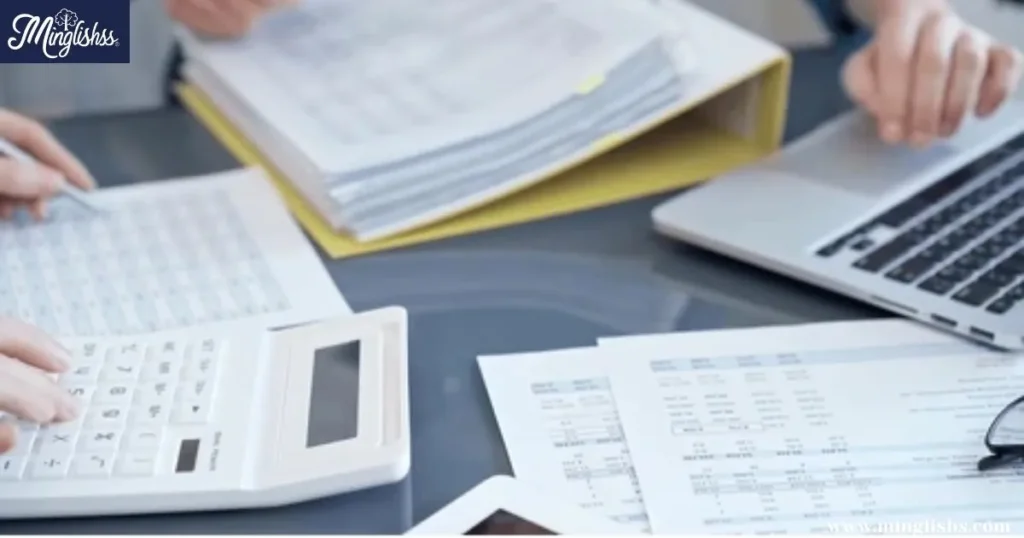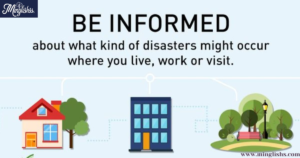“Expressing the need for review in various ways can help you sound more professional and approachable.”
When you want someone to review or verify something, it’s essential to express your request clearly but without sounding repetitive. “Please check” is a commonly used phrase, but there are many alternatives that can add variety and improve your communication. Whether you’re in a formal work setting, casual conversation, or even sending a quick message to a friend, changing up how you ask someone to review something can be beneficial.
In this blog, we’ll explore 35 other ways to say “Please check” that can suit different scenarios. These alternatives range from casual to formal, helping you navigate various situations with ease. Not only will you sound more professional, but you’ll also make your communication more engaging and effective.
Whether you’re drafting an email, chatting with a colleague, or giving instructions to a team, you can use these alternatives to ensure that your message is clear and polite. By using varied phrases, you prevent your language from becoming monotonous and encourage better responses.
1. “Could you take a look?”
Scenario: Sarah asks her teammate: “Could you take a look at the presentation slides before the meeting?”
Explanation: A polite and informal way of asking someone to review something. It’s conversational and easy to use in both work and personal settings.
Additional Tip: Use this when you want to keep things casual, especially when speaking to colleagues or friends.
2. “Would you mind reviewing?”

Scenario: Mike writes to his colleague: “Would you mind reviewing the draft before I submit it?”
Explanation: This is a more formal way to ask for a review. It’s respectful and acknowledges that the other person may have their hands full.
Additional Tip: Great for professional contexts where you need someone to check your work without imposing.
3. “Can you go over this?”
Scenario: Emma sends an email to her supervisor: “Can you go over the report and provide feedback?”
Explanation: A straightforward request that’s easy to understand. It’s more direct than “take a look” and works well for situations that require a more detailed review.
Additional Tip: Use this when asking someone to review something in depth.
4. “Please verify this.”
Scenario: James sends a message: “Please verify the details of the shipment before confirming the order.”
Explanation: A more formal way to ask for confirmation or a check. It’s often used in professional settings where accuracy is important.
Additional Tip: Ideal for scenarios where precision and correctness are crucial.
5. “Could you confirm this?”
Scenario: Lily writes to her client: “Could you confirm the meeting time for next week?”
Explanation: A polite request to ensure that something is accurate or agreed upon. This is ideal for situations where confirmation is needed.
Additional Tip: This phrase is great when you need someone to acknowledge or approve something.
6. “Would you be able to inspect this?”
Scenario: Tom sends a message to his colleague: “Would you be able to inspect the documents for errors before we finalize them?”
Explanation: A more formal and professional alternative to “please check.” It implies a thorough look-through of the materials.
Additional Tip: This phrase can be used when you expect the person to do a detailed examination.
7. “Can you look into this?”
Scenario: Sarah asks her manager: “Can you look into the issue with the system and see if it can be fixed?”
Explanation: This phrase is often used when requesting someone to investigate or find out more about an issue. It’s ideal when you want a deeper dive into the matter.
Additional Tip: Perfect for technical or troubleshooting situations.
8. “Would you kindly take a look?”
Scenario: Kevin asks his boss: “Would you kindly take a look at the proposal I’ve prepared?”
Explanation: This phrase is both polite and formal, indicating a respectful request for someone to review your work.
Additional Tip: Great for formal settings or when addressing someone with a higher rank or position.
9. “Can you verify this?”
Scenario: Claire sends a message: “Can you verify the pricing details before I finalize the offer?”
Explanation: This is a direct way of asking someone to confirm or double-check something. It’s best used when the information must be precise.
Additional Tip: Ideal for situations involving contracts or agreements.
10. “Could you have a look at this?”
Scenario: Robert says to his colleague: “Could you have a look at the marketing report and let me know your thoughts?”
Explanation: A more casual way of asking for a review. It works well in informal settings or when speaking to colleagues you’re comfortable with.
Additional Tip: This is a great phrase when the review doesn’t require a detailed examination.
11. “Please give this a quick check.”
Scenario: Amanda writes to her team: “Please give this a quick check before we move forward.”
Explanation: This is a more casual, yet polite, way to ask someone to verify or inspect something quickly.
Additional Tip: Best used when you want a quick look-through rather than a thorough review.
12. “Would you be so kind as to review?”
Scenario: Jack writes in a formal email: “Would you be so kind as to review my presentation before I submit it?”
Explanation: A polite, slightly more formal request. It’s often used in professional and customer-facing situations to add an extra level of respect.
Additional Tip: Use this in formal settings where you want to show respect and politeness.
13. “Can you check this for me?”
Scenario: Linda asks her assistant: “Could you check this for me and make sure everything is correct?”
Explanation: A friendly yet respectful way to ask for help with checking something. It’s appropriate for both professional and personal contexts.
Additional Tip: Use this when you want to make sure everything is in order but in a more casual tone.
14. “Would you mind taking a look?”

Scenario: Peter asks his colleague: “Would you mind taking a look at this data before I submit the report?”
Explanation: This is a polite way of asking for help without sounding too demanding. It’s ideal when you don’t want to impose.
Additional Tip: A good option when you want to keep your tone light and courteous.
15. “Can you check this over?”
Scenario: Ellie writes: “Can you check this over for any errors before it goes live?”
Explanation: This phrase is useful when asking someone to review something with a focus on finding mistakes or errors.
Additional Tip: Use this when you want someone to examine a document, code, or plan for any problems.
16. “Can you review this?”
Scenario: Tom writes to his boss: “Can you review this report before the meeting?”
Explanation: Simple and direct, it’s a common alternative that’s perfect for most professional situations.
Additional Tip: Ideal for when you want a second set of eyes on something important.
17. “Would you be able to go through this?”
Scenario: Sarah asks her colleague: “Would you be able to go through this proposal and let me know your feedback?”
Explanation: Slightly more formal than “take a look,” this phrase implies a deeper review of the materials.
Additional Tip: Best for documents that require careful scrutiny.
18. “Could you inspect this?”
Scenario: Mark writes: “Could you inspect the invoice to ensure everything matches?”
Explanation: A more detailed and technical request, asking someone to examine something thoroughly.
Additional Tip: Great for contracts, invoices, or other important documents.
Other Ways to Say “Please Proceed”
19. “Would you mind taking a moment to look at this?”
Scenario: Emily writes to her colleague: “Would you mind taking a moment to look at the new policy draft?”
Explanation: A polite and respectful way to request a review, especially if you’re asking someone to invest a little extra time.
Additional Tip: Ideal when you want to show appreciation for someone’s time.
20. “Can you double-check this?”
Scenario: Richard asks his assistant: “Can you double-check these numbers before I send the final report?”
Explanation: A direct request, usually when you want someone to confirm something again for accuracy.
Additional Tip: This is particularly helpful in accounting, math, or any field where precision is crucial.
21. “Could you assess this?”
Scenario: Anna writes: “Could you assess the situation and let me know your thoughts?”
Explanation: A slightly formal request to evaluate or analyze a matter. It works well for professional or serious discussions.
Additional Tip: Best used when you need more than just a casual check; use it when a deeper assessment is required.
22. “Can you give this a once-over?”
Scenario: Lucy writes to her colleague: “Can you give this a once-over and let me know if you spot anything unusual?”
Explanation: A casual way of asking someone to review something quickly. It’s informal and ideal for light checks.
Additional Tip: Use this phrase in less formal settings or when the task at hand is not too critical.
23. “Would you care to take a look?”
Scenario: Sarah asks: “Would you care to take a look at this presentation before I finalize it?”
Explanation: A polite and somewhat formal way of asking for a review. It’s a softer request that is often used in professional contexts.
Additional Tip: Perfect for when you want to offer someone the choice of reviewing something rather than demanding it.
24. “Can you inspect this for errors?”
Scenario: John writes: “Can you inspect this document for errors before we print it?”
Explanation: A specific request, focusing on finding mistakes or errors. It’s best for detailed or high-stakes materials.
Additional Tip: Great for proofreading or error-checking tasks.
25. “Could you go over this briefly?”
Scenario: Claire asks: “Could you go over this briefly and let me know if anything stands out?”
Explanation: This request implies a quick but attentive review, ideal when you need a fast evaluation.
Additional Tip: Use this phrase when you need feedback quickly but still want to ensure accuracy.
26. “Can you take another look?”
Scenario: Mark writes: “Can you take another look at this data to confirm the findings?”
Explanation: A polite way to ask someone to recheck something, often after a first review.
Additional Tip: This is helpful when there’s a need for double confirmation.
27. “Would you be able to verify this information?”
Scenario: Rachel writes: “Would you be able to verify this information before I submit the final report?”
Explanation: A formal, professional way to ask for verification. It’s ideal in contexts where accuracy is important.
Additional Tip: Use this when facts or details need to be confirmed before proceeding.
28. “Could you help me confirm this?”
Scenario: Tim writes: “Could you help me confirm the meeting schedule for tomorrow?”
Explanation: A collaborative request, useful when you want someone to confirm information or details.
Additional Tip: This is effective when you want to work together to confirm something, not just ask for a check.
29. “Would you be willing to check this?”
Scenario: Fiona asks: “Would you be willing to check this draft for me before I send it out?”
Explanation: A polite, respectful request that acknowledges the person’s time and willingness to help.
Additional Tip: Ideal when you want to approach someone in a friendly and non-imposing way.
30. “Can you review this thoroughly?”
Scenario: Jake writes: “Can you review this thoroughly and provide detailed feedback?”
Explanation: A request for a more in-depth review of a document, report, or plan.
Additional Tip: Perfect for situations that require a thorough assessment, such as complex projects or reports.
31. “Could you check the details?”

Scenario: Lily writes: “Could you check the details of the contract before I sign it?”
Explanation: A request specifically asking someone to verify the finer points of something, usually for accuracy or correctness.
Additional Tip: This is great when you’re reviewing legal documents or agreements.
32. “Would you kindly verify the facts?”
Scenario: Robert writes: “Would you kindly verify the facts before I publish the article?”
Explanation: A polite way to ask for fact-checking, often used in journalism or academic settings.
Additional Tip: Ideal for verifying important information.
33. “Can you examine this?”
Scenario: Tom writes: “Can you examine this proposal and let me know your thoughts?”
Explanation: A formal request to scrutinize or evaluate something closely.
Additional Tip: Best for professional and critical reviews where deep analysis is necessary.
34. “Would you mind taking a second look?”
Scenario: James asks: “Would you mind taking a second look at the code before we deploy it?”
Explanation: A polite and informal request to double-check something.
Additional Tip: Use this when you’re asking for a quick recheck after an initial review.
35. “Can you verify the accuracy of this?”
Scenario: Claire writes: “Can you verify the accuracy of this report before it’s finalized?”
Explanation: A direct and specific request to confirm the precision of information.
Additional Tip: Perfect for situations where correctness is key.
Pros and Cons of Using These Phrases
Pros:
- Variety and Flexibility: These alternatives provide a wide range of choices, making it easier to find the right tone for your message.
- Clear Communication: Offering a variety of ways to ask for a review can help you better communicate your needs in different settings.
- Approachability: Some of these alternatives sound friendlier, which can make the recipient feel more comfortable responding.
Cons:
- Tone Misinterpretation: Some phrases might sound too formal or too casual, depending on the situation.
- Overuse in Informal Settings: Using overly formal phrases in casual settings can come off as insincere or too stiff.
Conclusion
Incorporating a variety of phrases into your vocabulary is an easy way to keep your communication fresh, professional, and engaging. By avoiding repetitive phrases like “Please check,” you can better tailor your language to different contexts—whether formal, casual, or somewhere in between.
Use these 35 alternatives, and you’ll make your requests sound more approachable, clear, and respectful. And remember, the key is to always match your tone to the situation and the person you’re addressing. With these alternatives, your communication will be more effective and impactful every time.

Hi, I’m Lauren Reynolds: I bring creativity to English lessons, mixing fun with learning. My goal is to inspire students to explore and enjoy the language.










